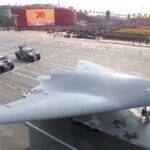The United States is significantly bolstering its airpower presence in the Caribbean region through a series of forward deployments involving MQ-9 Reaper drones, F-35A Lightning II fighters, and enhanced intelligence-surveillance-reconnaissance (ISR) capabilities. These moves are part of a broader effort by U.S. Southern Command (USSOUTHCOM) and 12th Air Force (Air Forces Southern) to reassert strategic influence across the hemisphere amid rising geopolitical competition and transnational threats.
MQ-9 Reapers Deployed to Curaçao for Persistent ISR
In a notable shift from previous rotational deployments using manned aircraft like the E-3 Sentry or RC-135 Rivet Joint, the U.S. Air Force has stationed MQ-9 Reaper unmanned aerial systems at Hato International Airport in Curaçao. The deployment began in late 2023 and continues into 2024 under the auspices of 12th Air Force (AFSOUTH), providing persistent ISR coverage over key maritime corridors used for narcotics trafficking and other illicit activities.
The MQ-9s are operated by active-duty personnel from Creech AFB via remote links but are supported by an on-site contingent for launch-and-recovery operations. The aircraft are equipped with EO/IR sensors and synthetic aperture radar (SAR), offering all-weather surveillance capabilities across vast oceanic expanses. These assets have already contributed to multiple interdictions coordinated with Joint Interagency Task Force South (JIATF-S) based in Key West.
Fifth Generation Presence: F-35As Train from Puerto Rico
In February 2024, four F-35A Lightning IIs from Hill AFB’s 388th Fighter Wing deployed to Muñiz Air National Guard Base in Puerto Rico for Exercise Forward Tiger. While officially framed as a training opportunity with regional partners such as the Dominican Republic and Jamaica, the deployment also served as a proof-of-concept for operating fifth-generation fighters from austere locations within USSOUTHCOM’s area of responsibility.
The exercise validated agile combat employment (ACE) concepts—dispersed basing with minimal footprint—and tested interoperability between active-duty USAF units and National Guard support elements. Notably, this marks one of the first known instances of F-35 operations within the Caribbean basin under SOUTHCOM authority.
ISR Expansion Beyond Drones
While MQ-9s provide tactical ISR over maritime routes and littorals, USSOUTHCOM is also leveraging other airborne platforms for strategic surveillance. U.S. Navy P-8A Poseidons have conducted patrols from El Salvador’s Comalapa Cooperative Security Location under counter-narcotics missions. Additionally, Army RC-12X Guardrail aircraft have been rotated through Colombia under bilateral agreements focused on counterinsurgency support.
This layered ISR architecture reflects an increasing emphasis on domain awareness across air and maritime domains—critical given rising Chinese commercial port activity in Panama and growing Russian naval visits to Venezuela.
Strategic Rationale: Countering Transnational Threats & Great Power Competition
The renewed focus on forward-deployed air assets aligns with USSOUTHCOM Commander Gen. Laura Richardson’s repeated warnings about malign influence operations by China and Russia in Latin America. In congressional testimony throughout 2023–24, she emphasized that adversaries are exploiting governance gaps via economic coercion or hybrid threats—necessitating greater U.S. presence.
- China: Operates over 40 port projects across Latin America; Huawei infrastructure dominates regional telecom networks; PLA-linked space tracking facilities exist in Argentina.
- Russia: Maintains military cooperation agreements with Venezuela; has conducted Tu-160 bomber flights into the region several times since 2018.
The deployment of advanced ISR platforms like MQ-9s allows real-time monitoring of these activities while enabling rapid response options via nearby fighter assets such as the F-35As or legacy aircraft like AFSOUTH’s KC-135R tankers stationed at Soto Cano AB in Honduras.
Basing Infrastructure & Interoperability Challenges
Sustainment remains a key challenge for high-tech platforms operating far from CONUS bases. The temporary use of Muñiz ANGB illustrates some logistical flexibility but also highlights constraints—such as limited hardened shelters or secure data links required for fifth-gen aircraft like the F-35A.
To mitigate this gap, SOUTHCOM has invested in cooperative security locations (CSLs) such as those at Curaçao and Aruba—facilities that can host rotational forces without permanent basing agreements. These CSLs offer runway access and basic logistics support while maintaining political flexibility with host nations wary of long-term U.S. military footprints.
Future Outlook: Toward Persistent Regional Presence?
Sustained deployments of unmanned systems like MQ‑9s suggest a trend toward semi-permanent ISR coverage rather than episodic rotations common during earlier decades. This could evolve into more formalized mission sets akin to CENTCOM’s drone architecture if regional partners remain amenable.
Meanwhile, exercises like Forward Tiger may expand to include additional fifth-gen participants such as Navy F‑35Cs or Marine Corps STOVL variants (F‑35Bs), especially given their expeditionary basing flexibility on short runways or amphibious ships operating near Central America’s Pacific coastlines.
The integration of advanced sensors into SOUTHCOM’s toolkit reflects not only operational necessity but also strategic signaling—to allies that Washington remains engaged beyond Europe or INDOPACOM theaters—and to adversaries that gray zone encroachment will be met with persistent domain awareness backed by credible force projection options.









